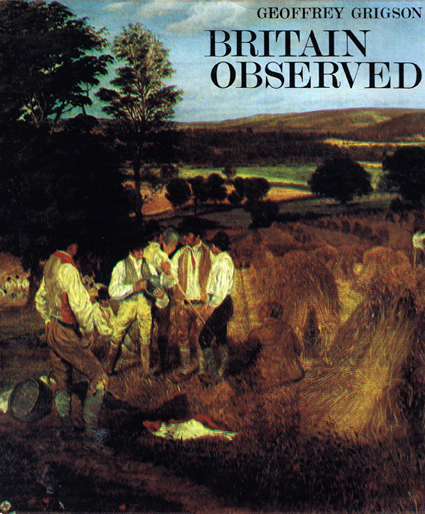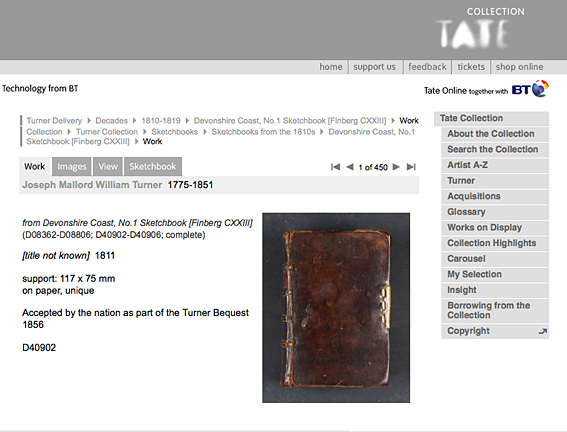TURNER’S SKETCHBOOKS
October 29th, 2008 adminI’ve been looking at Geoffrey Grigson’s book Britain Observed; the Landscape Through Artist’s Eyes (Phaidon Press, 1975) where he examines some seventy artists from Rubens to Victor Pasmore and looks at how they have reacted to the landscapes of England, Scotland and Wales. His approach is emotional rather than art-historical and the result is what he calls ‘a book of art and a book of places’.
There’s an interesting chapter called Landscape journeys where Grigson studies J.M.Turner’s sketchbooks to get an understanding of how the artist worked. He writes-
“Summer, especially early summer, when the light was more vigorous and there was less chance of rain and cold, was the time for such professional expeditions, for finding and sketching views, for building up a stock of drawings of every chance thing, every mass of trees or movement of water of deployment of clouds or waddling ducks, which might come into the finished pieces to be worked up, through autumn and winter, for patrons for the exhibitions, for the aquatint publishers.”
There’s a particularly revealing section where Grigson highlights the importance of Turner’s patrons to his summer itinerary-
“The way to sales and livelihood was not to wander off and please yourself. The painter worked in neighbourhoods which attracted the well-to-do summer ‘tourists’ and their families, he sketched the ruined abbeys, the waterfalls, the harbour, the rocking stone they might like to remember and admire again in a drawing-room portfolio of watercolours…..the expedition had to be planned carefully and carried out economically. There were orders to be arranged ahead of travel, there were patrons to be visited en route for new orders or in search of payment for views already ‘taken’ and delivered.”
Several of Turner’s early sketchbooks show how the artists worked out his itineraries, listing his mileage, and placing beforehand the castles, churches, the abbeys, the bridges and so on, which might be worth sketching.
From a sketchbook of 1974, Turner then ninetten years old:
Derby; near which is Dale Abbey.
Nottingham, 3 Churches, St. Mary, Gothic, a large Castle, romantic situated. In the Market Place, one end   Justice, the other a Cross supported by 4 Doric Columns. A Bridge of 19 arches.
Linton, a mile from N., a Abbey.
At Southill or Southwell is a Collegiate Church. There is remains a Battlement Tower of a Castle N.
Newark, a Bridge, a Gothic Church and Castle.
At Stamford, R. of a Castle.
At Crowland a triangular Bridge, pure Gothic. Great part of the Abbey still remains the Steeple, with the West isle, with carv’d Figure.
Peterborough Cathedral.
A large number of Turner’s sketchbooks (nearly 300) were bequest to the Tate after his death. You can see extensive samples of them on the Tate’s website here. (See the screenshot above).
You can read two previous blog posts I’ve made about Turner here and here.



